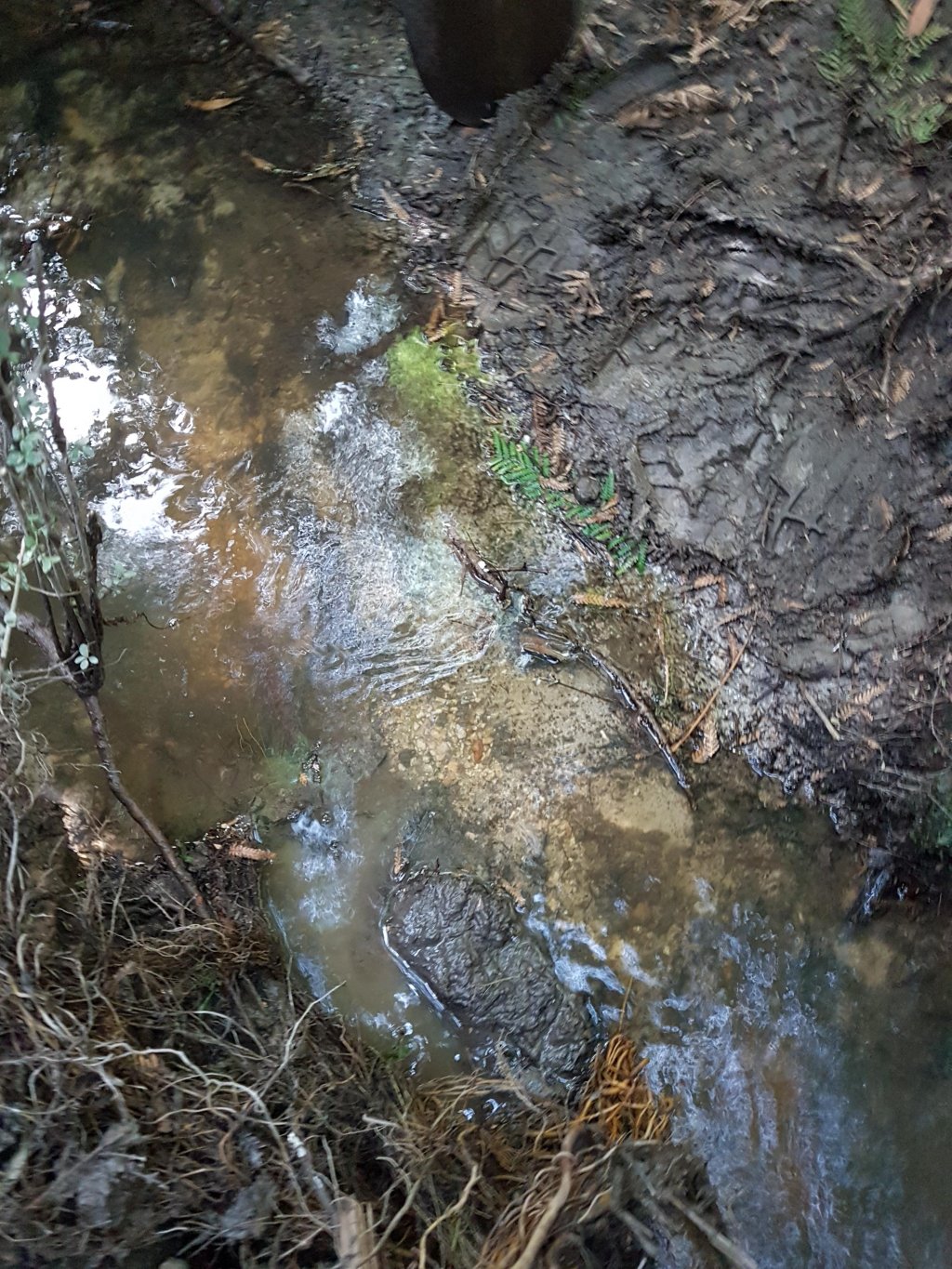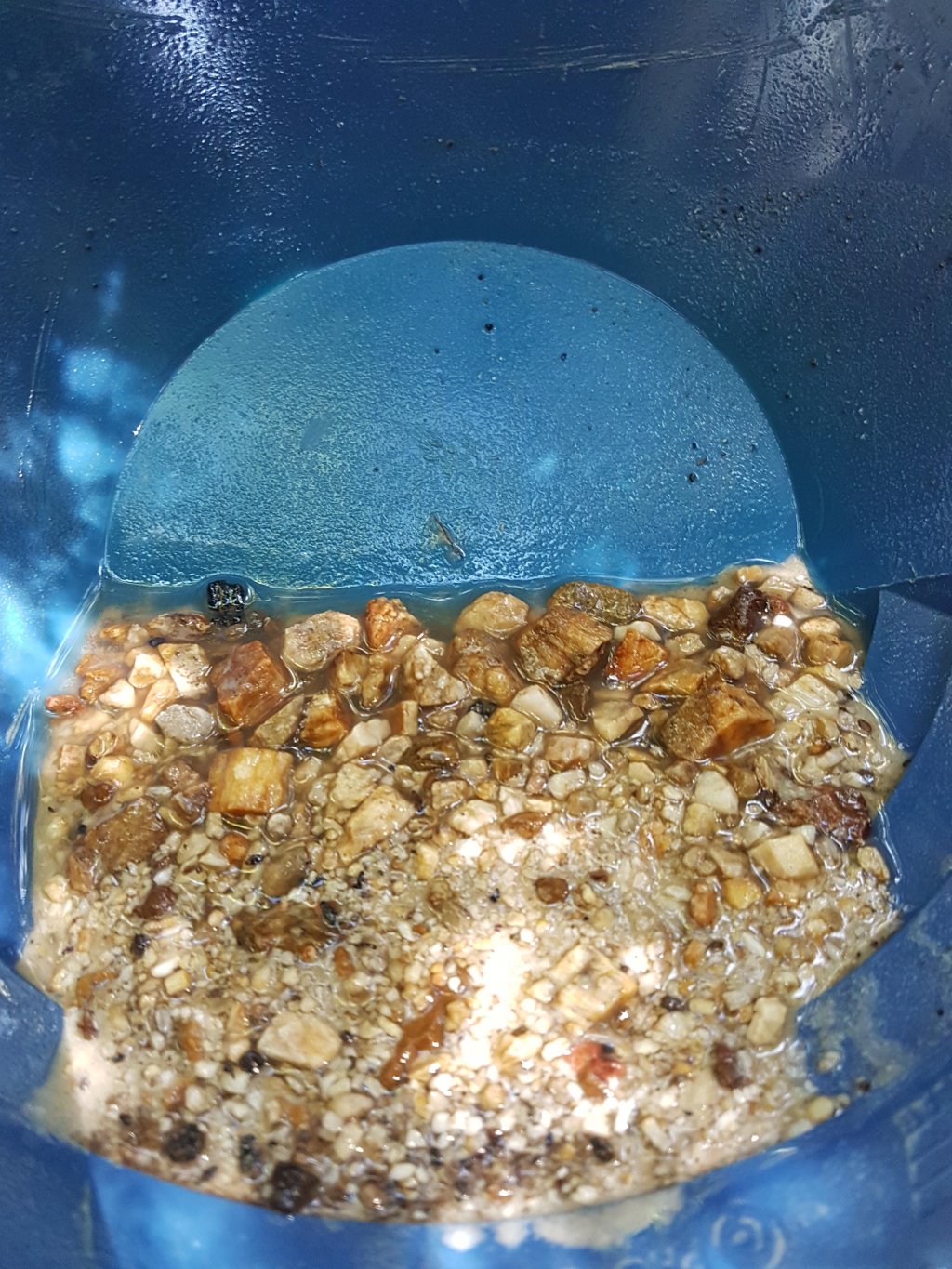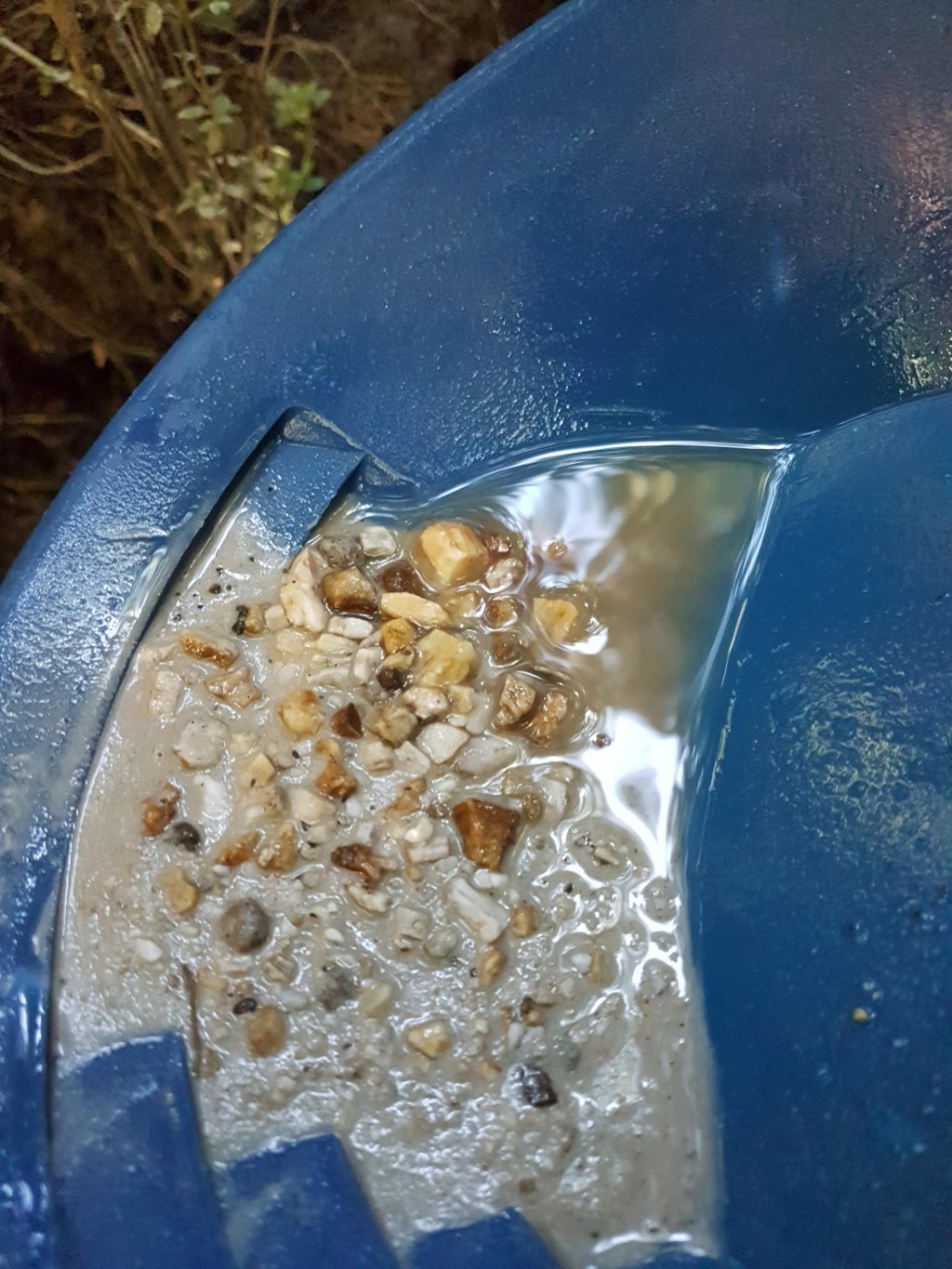Hi guys,
Just after a little assistance - my Uncle owns about 20 acres in Macclesfield, not too far away from the Mineshaft Reserve....I've done a little reading on Gold in the area, and know that there was a little gold found, but doesn't appear to be too much info from what I could find.
Anyway, he has a creek running right through the property which I explored today. It's a heavily tree-ferned area, and for the most part the creek has mud banks....I stuck a stick in at one point and around 500mm until you hit something solid.
I stumbled across one section however which was a white/grey clay deposit - right after this very narrow channel that the water has been cutting away at - note the creek is very small so I'm not talking large scale here.
On it were quantities of quartz, so I decided to do a couple test pans just skimming the gravels up and a small layer of clay. Reduced to black sand and managed to find a nano-fleck of gold in the first pan - did a couple more pans after that but nothing more as I ran out of time.
I don't know, but the gravel colours look good to me and is this white-ish clay pipeclay?
Last thing I did for the day was dig a big clay chunk out of the creekbed, about 400mm down and noticed that there are quartz pieces even at the bottom......
Is this worth investigation further? - or can someone shed some light on similar experiences in the area?
Photos attached (hopefully)



Just after a little assistance - my Uncle owns about 20 acres in Macclesfield, not too far away from the Mineshaft Reserve....I've done a little reading on Gold in the area, and know that there was a little gold found, but doesn't appear to be too much info from what I could find.
Anyway, he has a creek running right through the property which I explored today. It's a heavily tree-ferned area, and for the most part the creek has mud banks....I stuck a stick in at one point and around 500mm until you hit something solid.
I stumbled across one section however which was a white/grey clay deposit - right after this very narrow channel that the water has been cutting away at - note the creek is very small so I'm not talking large scale here.
On it were quantities of quartz, so I decided to do a couple test pans just skimming the gravels up and a small layer of clay. Reduced to black sand and managed to find a nano-fleck of gold in the first pan - did a couple more pans after that but nothing more as I ran out of time.
I don't know, but the gravel colours look good to me and is this white-ish clay pipeclay?
Last thing I did for the day was dig a big clay chunk out of the creekbed, about 400mm down and noticed that there are quartz pieces even at the bottom......
Is this worth investigation further? - or can someone shed some light on similar experiences in the area?
Photos attached (hopefully)






